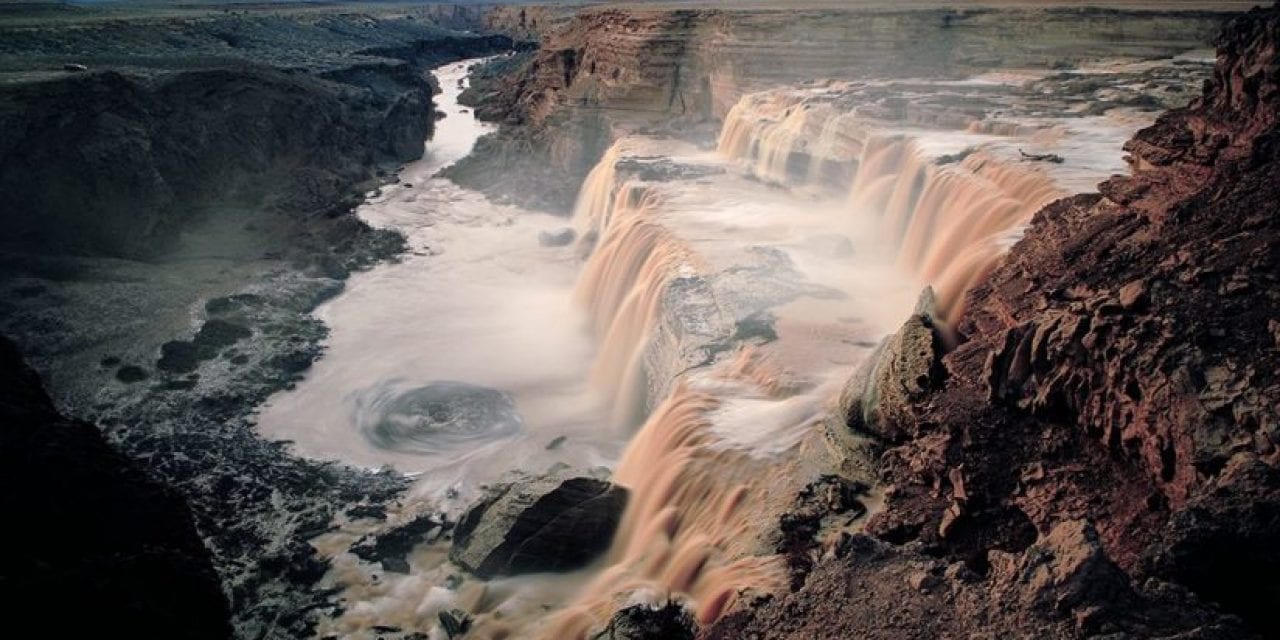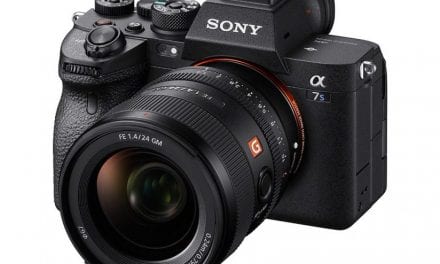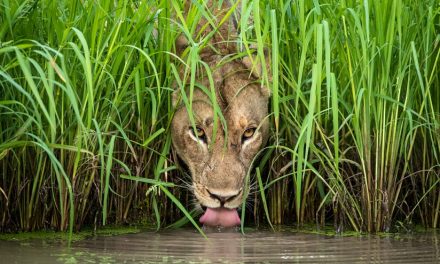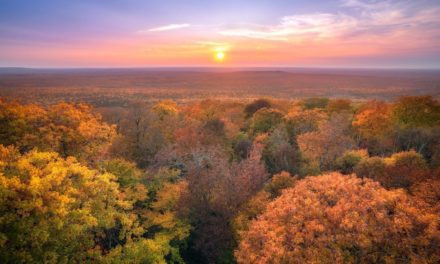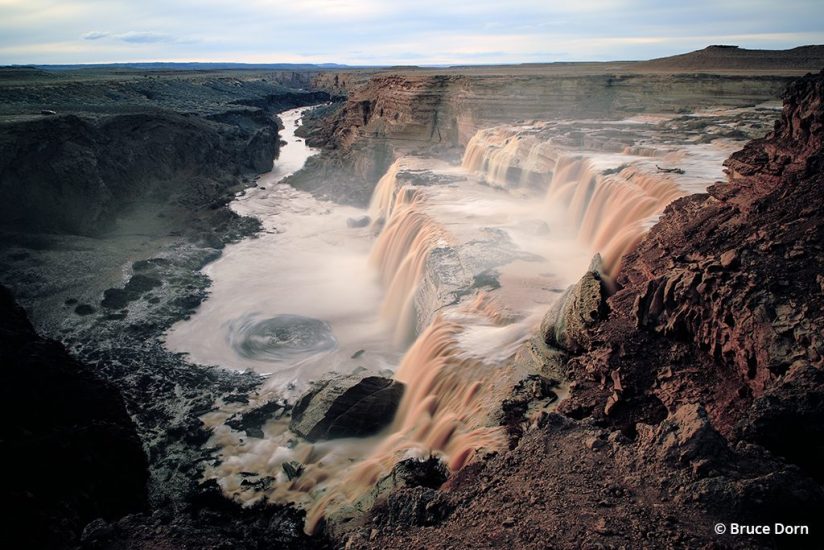
Snowmelt above Flagstaff, Arizona creates the spectacular Chocolate Falls. This seasonal cascade offered me the perfect venue for a lesson in the effects of longer shutter speeds on moving water. Photo by Bruce Dorn. Canon EOS 5D Mark IV, Canon EF 24-70mm f/2.8L II USM at 24mm, Tiffen ND 0.6 filter. Exposure: 5 sec., ƒ/10, ISO 100.
Remember when photography was a fresh and hot-blooded passion? I do. I hooked up with my first camera during the Summer of Love, 1969, and was immediately and hopelessly hooked. Everything was new and exciting and I had eyes for nothing else.
I studied magazine articles offering technical advice and “Top 10 Tips,” but I also had the benefit of learning in person from experienced local photographers. These guys were serious hobbyists, mostly, and I’ll label them as my “unwitting mentors”—photo mentors due to their zeal for all things photo-related, and unwitting in that I could easily trick them out of useful knowledge by simply hanging around.
It worked out great for everyone. They had an opportunity to share their passion and I learned a lot. While I didn’t make particular note of it at the time, I do recall that these old guys seemed to find great joy in the process. And why not? They had an audience for their bountiful bloviations and I had a chance to absorb lessons from the “School of Hard Knocks.” And all emerged with nary a bruise.
A lot has changed in photography since those days, but one thing hasn’t: the value of teaching what you know to the next generation. It’s a misconception to think that with young people today, their interest in photography, if any, is limited to smartphone pictures of pranks, kitties and food. And we mustn’t forget selfies. Lots and lots of selfies, right?
The younger folks do love their selfies (and who doesn’t love pictures of kittens?) but I’ve met and worked with many who are using photography and filmmaking to analyze and report on today’s complex social, scientific and ecological issues. I admire them.
How I Became A Photo Mentor
Born to teach, I’m more than happy to share knowledge with anyone willing to ask and I always populate my production crews with those who have actually listened. If that sounds like a classic master-apprentice-style relationship, it may well be, but it’s also a two-way street. Every moment I spend explaining things to my students, I spend at least as much time observing them and learning from their fresh new perspectives. That’s where my payoff lies, in vicariously viewing the tediously familiar through fresh eyes. “Seeing things for the first time” again, as it were.
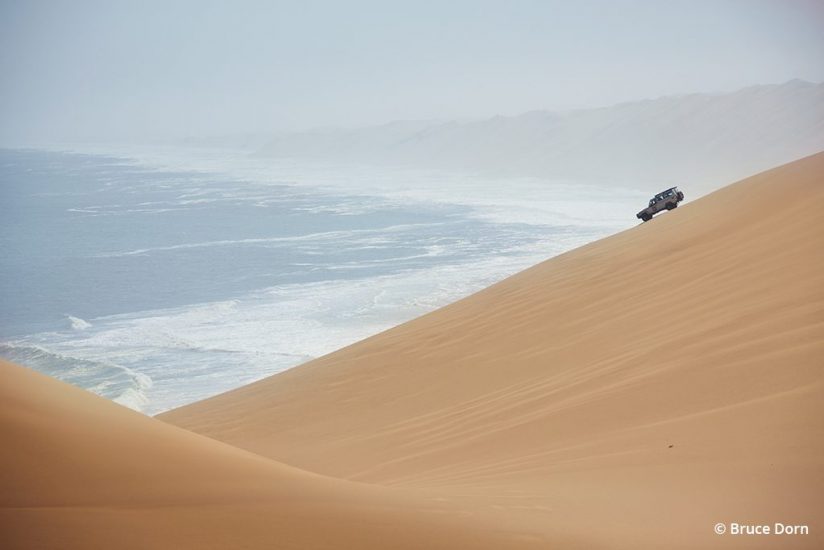
The bulk of my landscape photography is project driven. Ignoring my cinema gear for a moment, I captured this image of my client’s truck as it descended the last Namibian dune to the deadly Skeleton Coast. The Expeditions7 team successfully drove these vehicles across all seven continents. It was epic. Google it. Photo by Bruce Dorn. Canon EOS 5D Mark III, Canon EF 28-300mm ƒ/3.5-5.6L IS USM. Exposure: 1/1250 sec., ƒ/8, ISO 200.
That’s why I’m a loud advocate of mentorship, and encourage you to consider giving some of your time to inspire the next generation of photographers as a photo mentor. Mentoring pays out much more than it costs. Leveraging what I’ve learned by casually mentoring a small parade of young people over the past ten years, I suggest the following steps to help you do something similar, should you be so inclined.
Age isn’t the most important factor here—your mentee may be young or old—but I admit that I enjoy working with youngsters the most. Kids absorb knowledge quickly, are refreshing to be around and can be easily tricked into carrying heavy stuff.
I met my current mentee, Sara Honanie, a member of the Hopi Native American tribe, after meeting her dad Gilbert at an automotive electronics shop. During a break from his work of installing auxiliary driving lights on one of my photo-expedition trucks, Gilbert shared some pictures his daughter had captured on her smartphone’s camera. Although only eleven years old at the time, Sara showed signs of having a very good compositional eye. Adding that he hoped to see her graduate to working with a proper camera someday, Gilbert set the hook. I dug out a long-forgotten Canon EOS Rebel T2i that was doing nothing but gathering dust and sent it to Sara with the simple instruction, “Impress me!” And she did. We began working together soon after.
The following is a rough framework of my mentoring method. Feel free to improve upon it and share.
Find A Worthy Mentee
Apprentice, intern, sidekick, buddy—whatever you choose to call your mentee, you’ll first need to find one. Or, make it possible for one to find you. Among my friends and even new acquaintances, it’s no secret that I’m a life-long professional photographer and cinematographer and that my fields of expertise include fashion, automotive and adventure travel. Hardly a day goes by without someone offering to carry my camera bags. It seems like everyone I meet wants to bask in the warm glow of tanned swimsuit models, be engulfed in pungent clouds of tire smoke from rubber-roasting supercars, or schlep my gear around exotic overseas locations. I, on the other hand, want to hang out with someone who is prolifically creating images, interested in developing their own visual style and seeking constructive guidance.
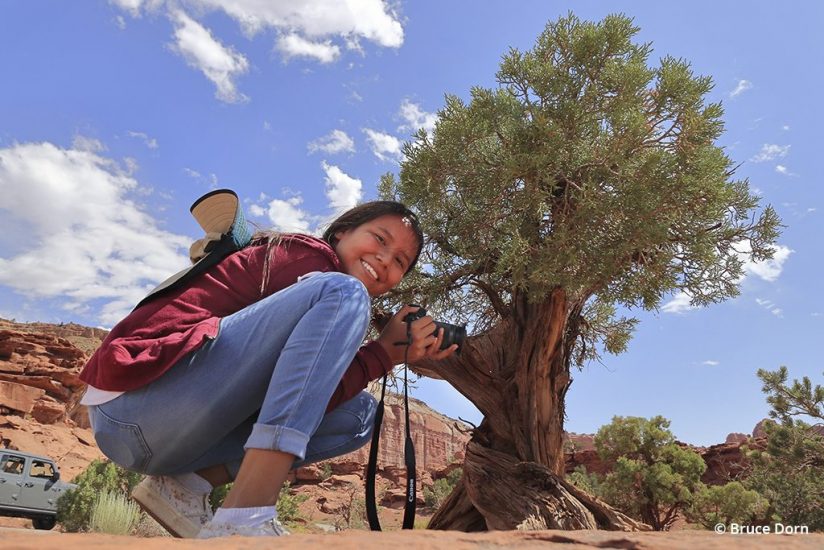
Sara began shooting with a smartphone and still prefers to compose on an LCD screen. She loves getting all sorts of cool angles so her M50’s flexible LCD suits her style perfectly. I’m always pleased when I see her shooting through some sort of interesting foreground framing. Photo by Bruce Dorn. Canon EOS M6, Canon EF 11-24mm f4L USM at 15mm. Exposure: 1/1000 sec., ƒ/6.3, ISO 200.
Spread the word. Let your friends know that you’re looking for a beginner to mentor. One of them might have a grandchild, a sibling or significant other who wants to learn about the art and craft of photography, someone ready to get up off of the couch and have a bit of outdoor adventure.
Odds are that there’s a Big Brother or Big Sister program in your community. Youngsters in these kinds of programs are generally there because they could benefit greatly from spending quality time with a benevolent adult. Nature and landscape photography are nothing but fun (when we aren’t cold, wet and miserable) so what could be a better format for friendship? Get yourself a Little Sibling and have some fun.
Put out the word and you’ll find someone.
How To Begin As A Photo Mentor
You could fly by the seat of your pants, but I recommend creating a simple and adaptable lesson plan. Once you figure out who you’re dealing with—and what they want to do with photography—everything else will fall into place.
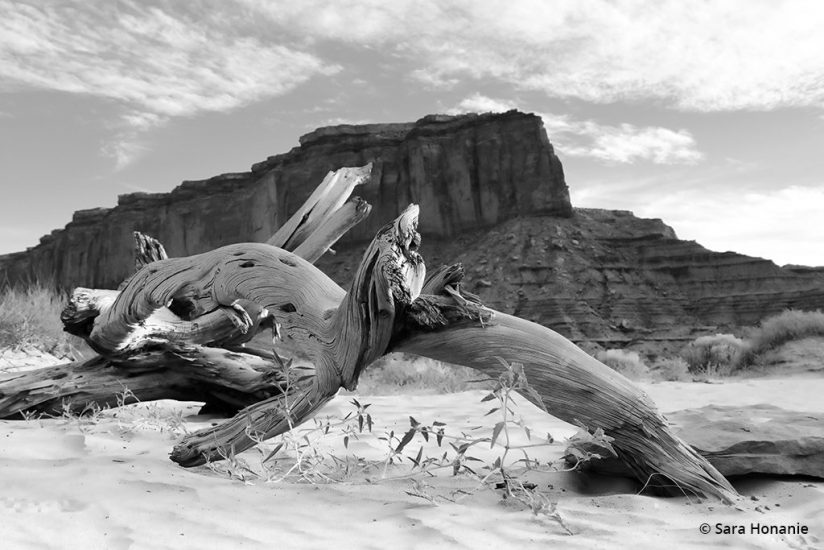
Although Sara lives a mere 100 miles from Monument Valley, our afternoon excursion was her first visit to the famous Navajo park. With me nearby and trying my best not to interfere, Sara busied herself investigating spatial relationships and monochrome mode. Photo by Sara Honanie. Canon EOS M50, Canon EF-M 18-150mm f3.5-5.6 IS STM at 18mm, Tiffen Circular Polarizing filter. Exposure: 1/640 sec., ƒ/5.6, ISO 640.
We’ll use Sara as an example. After spending some quality time goofing around with Sara and her dad, I concluded the following.
Who is your mentee?
- Sara is a sweet-natured, bright and curious teenager with great parents.
- Sara’s smartphone work showed a talent for composition but a minimal knowledge of exposure control.
- Sara’s smartphone imagery indicated a willingness to explore unusual points-of-view.
- Sara’s awareness of light seemed limited to “Is there enough light for the camera to function?”
What does she hope to do with her photography? For Sara, the answers are:
- Create fun images of her friends and family.
- Document life on Arizona’s Hopi and Navajo Reservations.
- Celebrate the spectacular beauty of her ancestral homelands.
- Market landscape imagery to fund her artistic pursuits.
With your mentee in mind, begin by creating a foundational lesson. In this case, it was an exercise in composition. I gave Sara the assignment to “Love the whole frame.” Compositionally, I always encourage my students to “get it right” at exactly the moment of capture. I insist that they pay special attention to the lines and forms that make up the image and especially to the ways in which these elements relate to the edges of the frame. My goal for Sara was that she would always consider the entirety of the frame when composing a shot. The closer we look, the more we see.
Review, Discuss & Reset
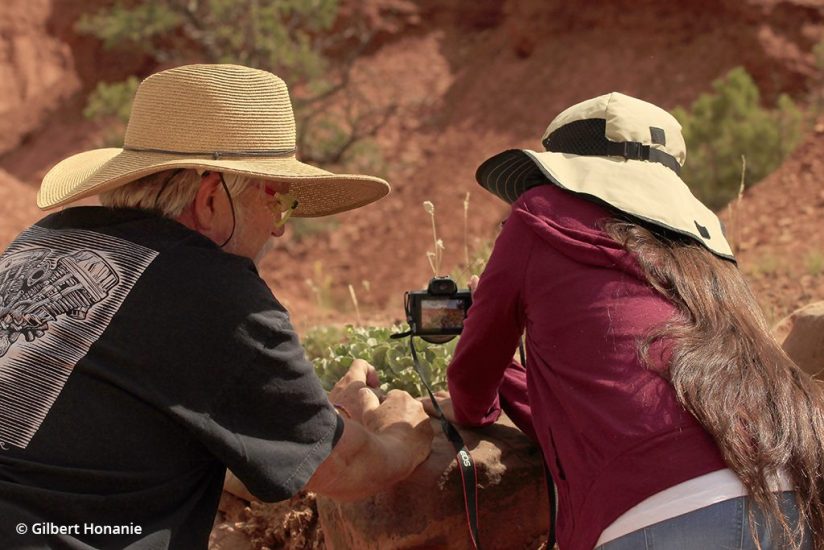
Sara’s dad Gilbert, a budding photographer himself, always accompanied us on our adventures. I asked him to shoot behind-the-scenes images of us at work and he did a fine job. He knows the area like the back of his hand and I hope he takes my advice and becomes a local photo guide. Photo by Gilbert Honanie. Canon EOS Rebel T6, Canon EF 70-200mm f/4L IS II USM at 70mm. Exposure: 1/1600 sec., ƒ6.3, ISO 200.
When reviewing a beginning student’s assignment, I recommend reinforcing the positive results while cutting plenty of slack for the inevitable errors. Be realistic about your expectations and remember to point out your own missteps as well. Criticism, even well-intentioned and very mild criticism, can cut to the quick of a beginner’s confidence, so err on the side of kindness. Don’t get your crusty old knickers in a knot —we’re not handing out participation trophies here, we’re being thoughtful and supportive.
- Praise the successes.
- Note the misses.
- Set new goals.
How did she do? Is she adapting to the camera? Is she appreciating its unique capabilities? Understand and adjust your teaching accordingly. After reviewing her assignment, I had a better understanding of Sara’s strengths and weaknesses. Great teaching is targeted teaching, so this is the time to tailor a bespoke approach that fits your mentee perfectly.
Create A Series Of Lessons
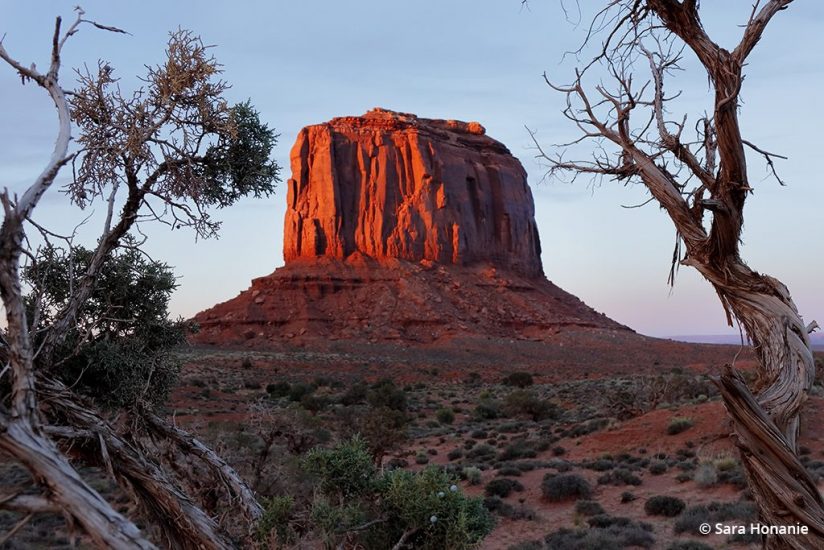
As magic hour descended over Monument Valley, Sara deployed her tripod, hustled to find interesting framing and did her very best to capture the nuance of the fading light. You can see many other beautiful images from this day on her Instagram. Photo by Sara Honanie. Canon EOS M50, Canon EF-M 18-150mm f3.5-5.6 IS STM at 18mm. Exposure: 1/16 sec., ƒ/5.6, ISO 200.
Thinking about your student’s goals, strengths and weaknesses, you can come up with assignments or lessons to help focus your mentee to develop specific skills. Here are some examples from my time with Sara.
- Exposure Control. I began working with Sara in manual exposure mode so I could make her aware of concepts like aperture, shutter and ISO. On location, I demonstrated how wider apertures resulted in shallow depth-of-field and how long shutter-durations allowed motion blur. She quickly “got it.” ISO variability was a bit harder for her to conceptualize so we activated Auto ISO and learned how to use Exposure Compensation to easily “brighten” or “darken” the image. Don’t be afraid to lean on camera automation during these early stages. Remember, today’s entry-level shooters most likely learned to capture imagery on fully-automatic smartphone cameras. Don’t turn them off to using a proper camera by drowning them in advanced techniques too early in the process. Use Full Auto if your mentee is easily frustrated by technique. Keep it fun and easy.
- Camera Placement. I start by searching out a great background with a strong foreground point-of-interest and then move around until I find the best foreground-to-background relationship. Sure, you can certainly mention classic rules of composition, but don’t suck the joy out of the moment by harping upon them. See if you can create something fun by breaking the rules yourself. Wallow in the mud, clamber atop a boulder, shoot through foreground tree branches, whatever, but always encourage the discovery of interesting points-of-view. Be sure to take plenty of fun shots of them working, too. I promise you they’ll love posting these behind-the-scenes super-selfies on social media and you’ll be a minor hero.
- Light Quality. I begin my lighting lessons by simply pointing out great light as we search for a shooting location. As we travel we talk about the qualities of light. We discuss hard light verses soft light. We look for examples of cross-lighting. We notice the color of light. We celebrate the serendipity of patchy light. We’ve even made a game of shouting out, “My shot!” when we round a bend to discover great lighting. Once a person actually begins to see the light it changes them. When Sara recently shared that high-noon, front-light made her want to barf, I howled with glee. From now on, no matter where life takes her, I know that Sara knows that she can always find beauty. She just has to wait until magic hour. How cool is that? It’s like 8000K cool…
- Concept Development. I’m a commercial photographer and filmmaker by trade and that means I do a lot of concept-driven image creation. I have a good eye and solid design sensibilities, but it’s my capacity to generate interesting ideas that actually earns me my most profitable projects. I love shooting gorgeous landscapes, but I make my daily bread by photographing ideas—often in front of gorgeous landscapes. Without my commercial work, I would never have the funds to indulge my other photographic passions. To that end, I make sure to introduce all of my mentees to what it is I actually do for a living. Some of them end up loving it as much as I do.
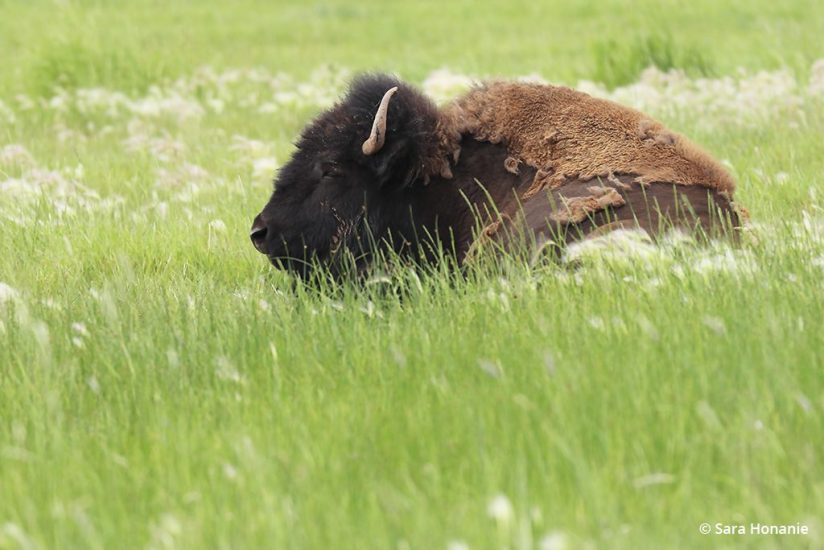
I needed to make a quick workshop scouting trip to Capitol Reef National Park and knew there were a few American Bison in the area. Including Sara and her dad in the trip gave me a good co-driver, youthful company, and even more opportunities to teach. This was Sara’s first introduction to long lens work. Photo by Sara Honanie. Canon EOS M50, Canon EF 100-400mm f/4.5-5.6L IS II USM at 400mm. Exposure: 1/125, ƒ/5.6, ISO 250.
Share The Entire Photographic Process
This past summer Sara and I worked with a terrific young concept model as I did some test shooting with the Canon EOS RP and its dedicated line of RF series lenses. Sara got some great shots using the Canon EOS M50, too. With those shots as evidence of her people-shooting skills, Sara was asked to photograph the pageant winner of the Miss Hopi competition. She has also been approached to create PR imagery for the Navajo Nation Police Department.
Spread the word about your mentee and you might be surprised by who is willing to step up. When my longtime sponsors heard about my work with Sara, they generously supported it. Canon gave Sara her own ImagePROGRAF PRO-1000 printer and Red River supplied fine art papers. Adobe provided Sara with a license for Photoshop CC, SanDisk offered memory cards, Tiffen contributed camera filtration and G-Technology pitched in with an ArmorATD 1TB portable drive. Jeep even loaned us a 2019 Wrangler Unlimited for a couple of weeks. My own wife helped by refurbishing and contributing a recently retired laptop. That’s my gal.
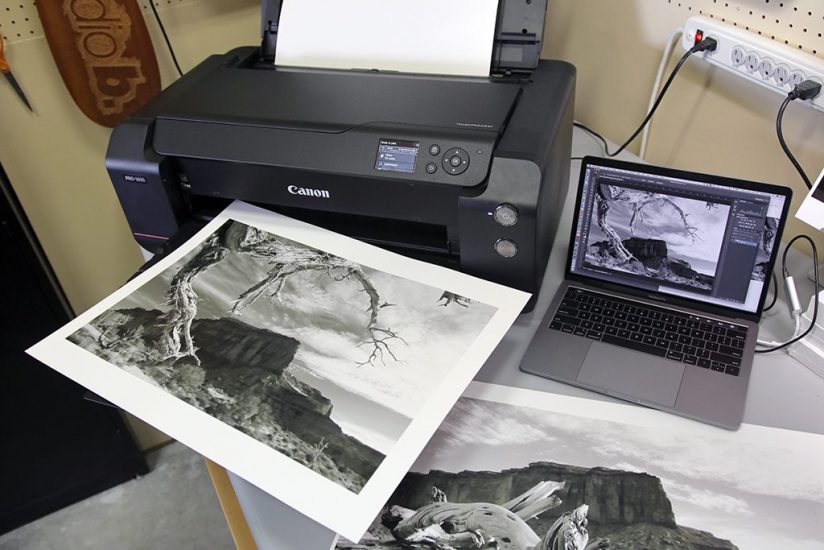
I’d love to see Sara fund her photographic adventures through the sale of display imagery, so I’m teaching her how to print using Red River Paper’s 17×25-inch Palo Duro substrates in the awesome Canon ImagePROGRAF PRO-1000 pigment printer.
In anticipation of selling landscape display prints, I’ve started teaching Sara how to print using a professional-grade photo printer and materials. Once she knows her way around the printer, our goal is to have Sara selling décor prints to collectors from around the world. Who better to capture and sell iconic images of the desert southwest than one of its own native princesses? Nobody, if you ask me.
If you’ve read this far I’ll bet you too have tons of knowledge and enthusiasm to share as a photo mentor. Do it. There’s someone out there that will appreciate you and all that you have to give. Give mentoring a try. If you’re like me, you’ll only wish you’d started sooner.
You can see Sara Honanie’s photos on Instagram @sarahonanieimages. Follow Bruce Dorn on Instagram @dorn.bruce.
The post Be A Photo Mentor appeared first on Outdoor Photographer.

